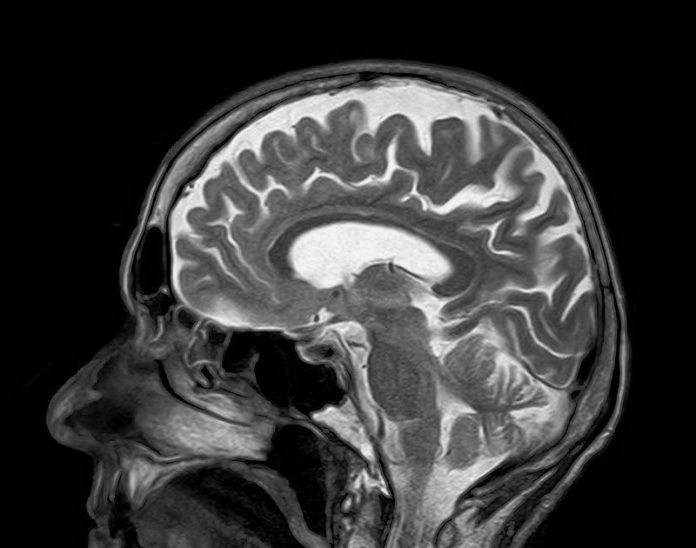
In a new study, researchers have developed a new non-invasive molecular imaging approach based on magnetic resonance imaging (MRI) to dynamically measure glucose level changes in the brain lymphatic system.
Their discovery may help in identifying Alzheimer’s disease at early stages so that treatments can start as soon as possible.
The research was conducted by a team at the City University of Hong Kong (CityU) and Johns Hopkins University.
Diagnosis of Alzheimer’s disease, the most common type of dementia, is complicated by its overlapping signs with normal aging.
The tricky part of identifying Alzheimer’s disease is that early abnormalities, such as the emergence of protein plaques, are similar to normal aging in the human brain.
Patients diagnosed with symptoms in which deposition of plaques in the brain hampers cognitive function are most likely already in the middle or late stage of the disease.
Actually, pathologies in the brain happen 15 or 20 years before the symptoms appear.
Recent findings have shown that abnormal glucose uptake and clearance in the glymphatic system—the lymphatic system in the brain—are one of the hallmarks of early Alzheimer’s disease.
The glymphatic system is a drainage-like system for cerebrospinal fluid to flow through the brain tissue, thus facilitating efficient clearance of solutes such as glucose and protein waste from the brain.
Currently, glucose uptake and metabolism can be assessed by imaging with positron emission tomography (PET) in hospitals.
However, the PET scans with radioactive tracers are expensive, and its invasive nature has hindered its general clinical application. Moreover, patients cannot be scanned too frequently with radioactive tracers.
In the study, the team successfully developed a new imaging approach based on Chemical Exchange Saturation Transfer MRI (CEST MRI) to assess glucose uptake and clearance in the glymphatic system of the mouse brains non-invasively.
According to the MRI results, the team observed that Alzheimer’s disease mice have shown much slower cerebrospinal fluid clearance rates than the age-matched healthy mice, which is consistent with previous neuropathological findings.
Moreover, much higher glucose uptake was detected in the brain parenchyma of the six-month-old mice with Alzheimer’s disease compared to the healthy mice of the same age.
These also serve as hallmarks to identify Alzheimer’s disease from normal aging.
The imaging of glucose uptake and clearance in the cerebrospinal fluid and brain parenchyma enables the assessment of the brain glymphatic system.
Importantly, abnormalities are detected at the early stage of Alzheimer’s disease when little neuropathology develops in the brain.
The team believes this non-invasive assessment of the glymphatic system can serve as an imaging biomarker to reveal the early pathology in Alzheimer’s disease.
The lead author of the study is Dr. Kannie Chan Wai-yan, associate professor of the Department of Biomedical Engineering (BME) at CityU.
The study is published in Science Advances.
Copyright © 2020 Knowridge Science Report. All rights reserved.



